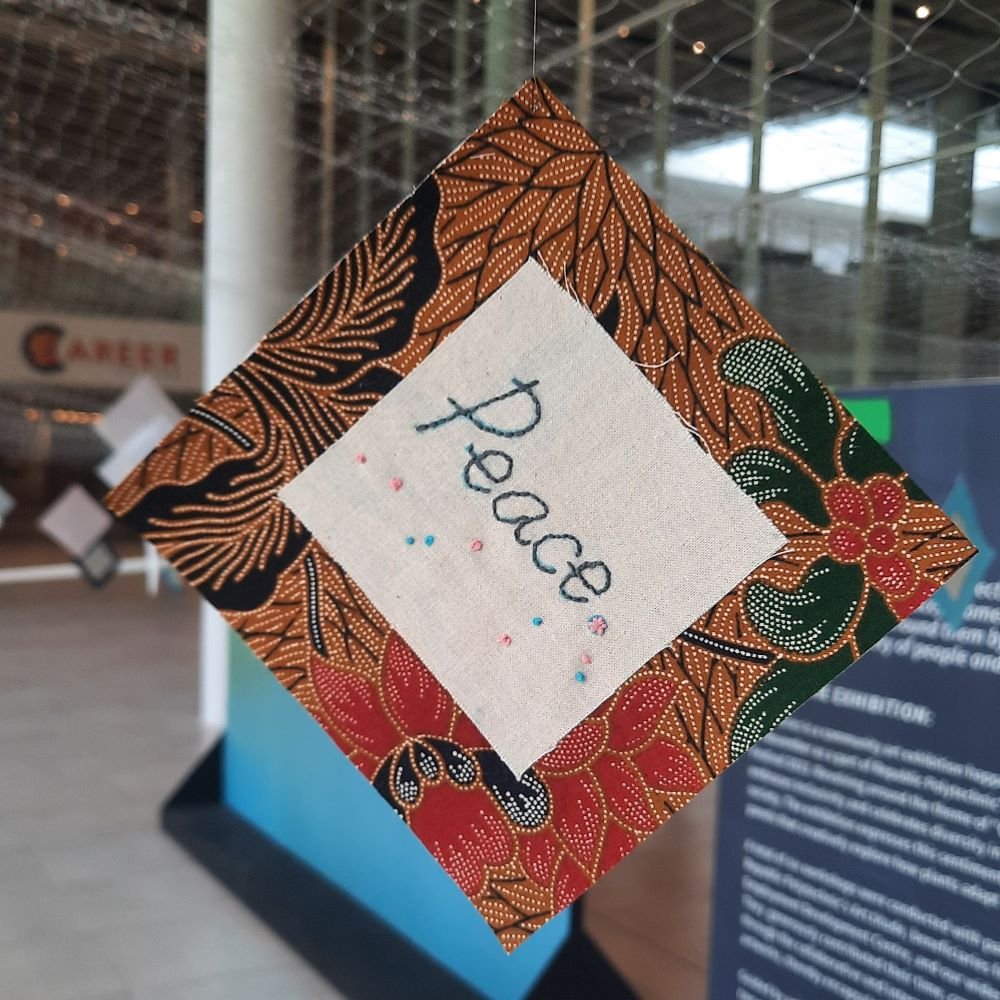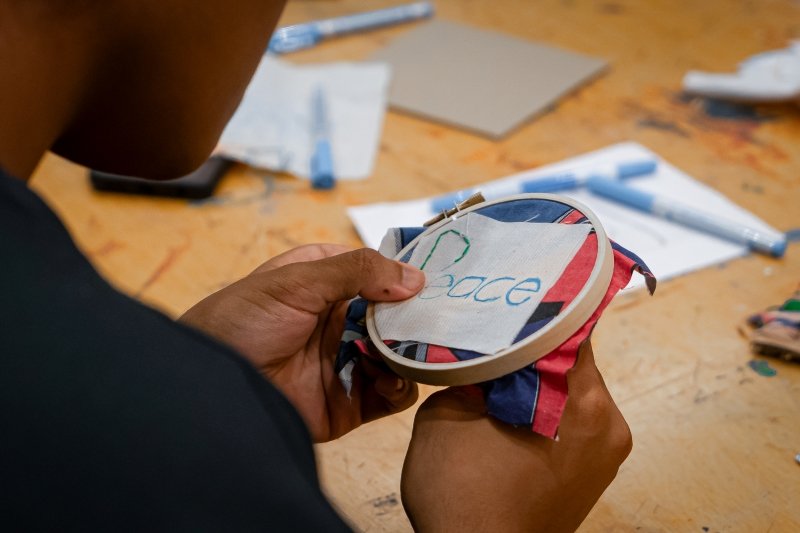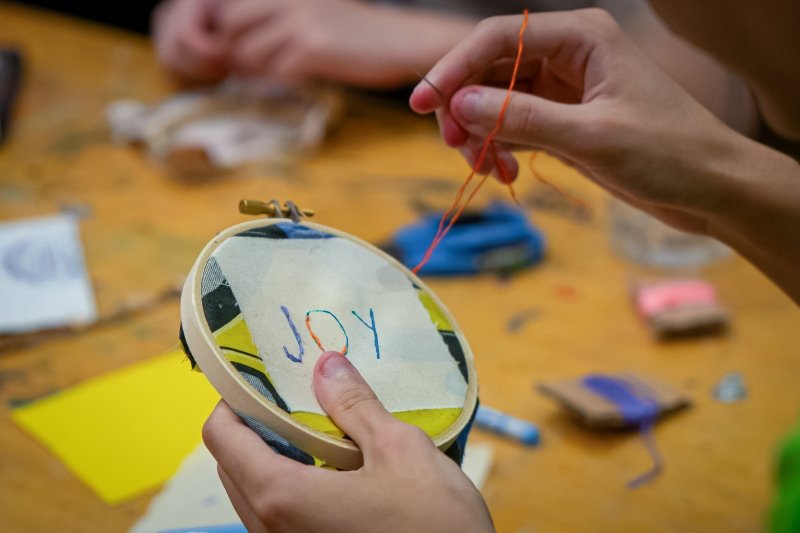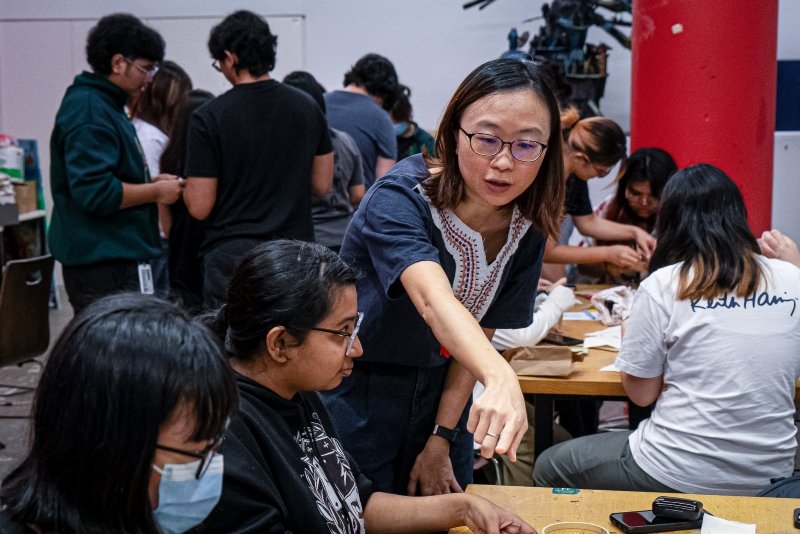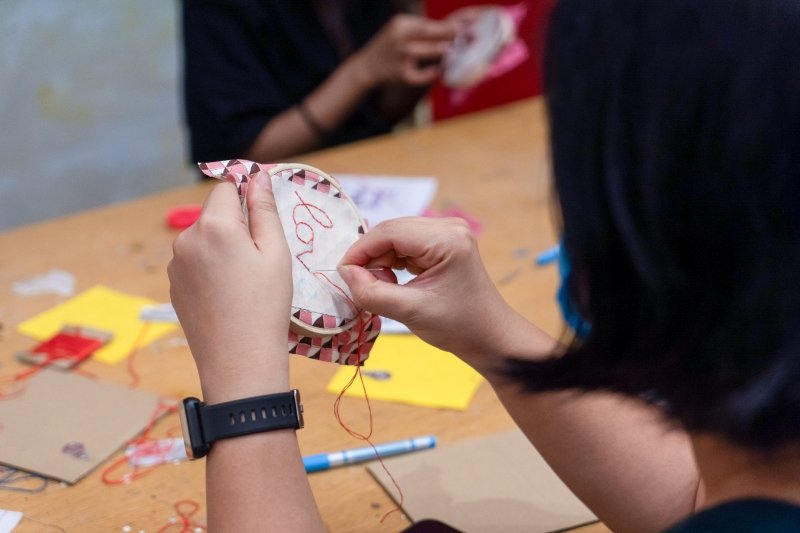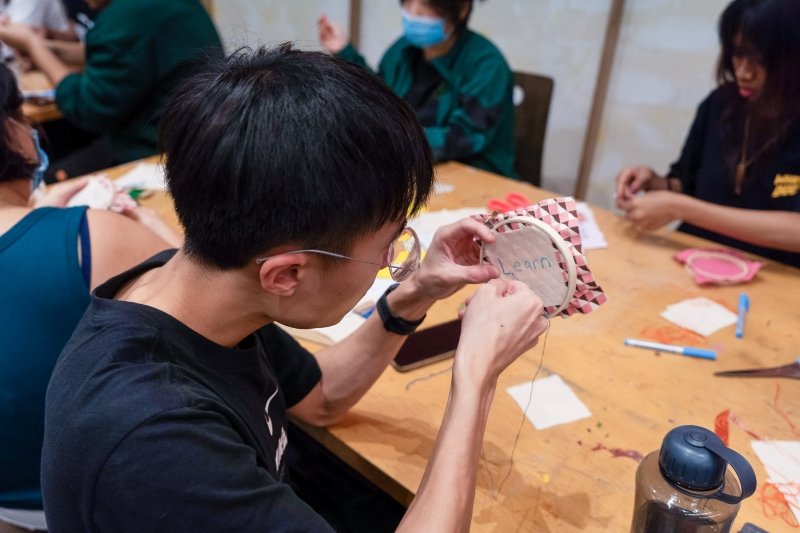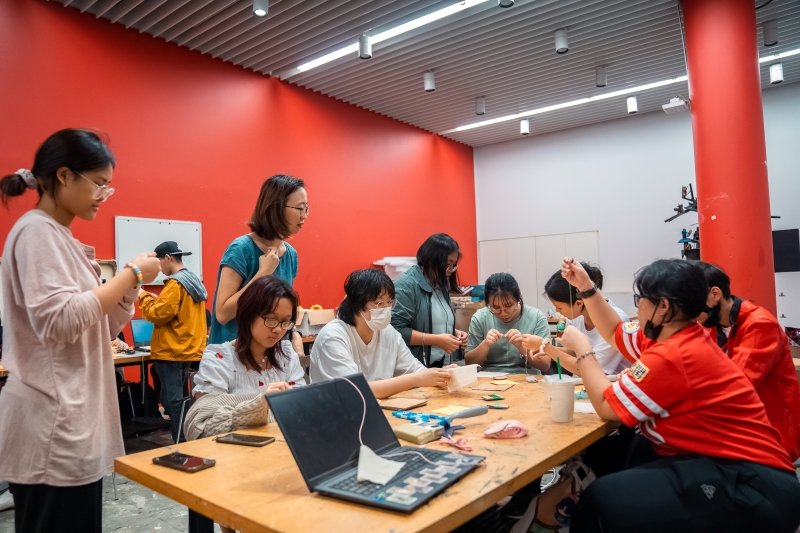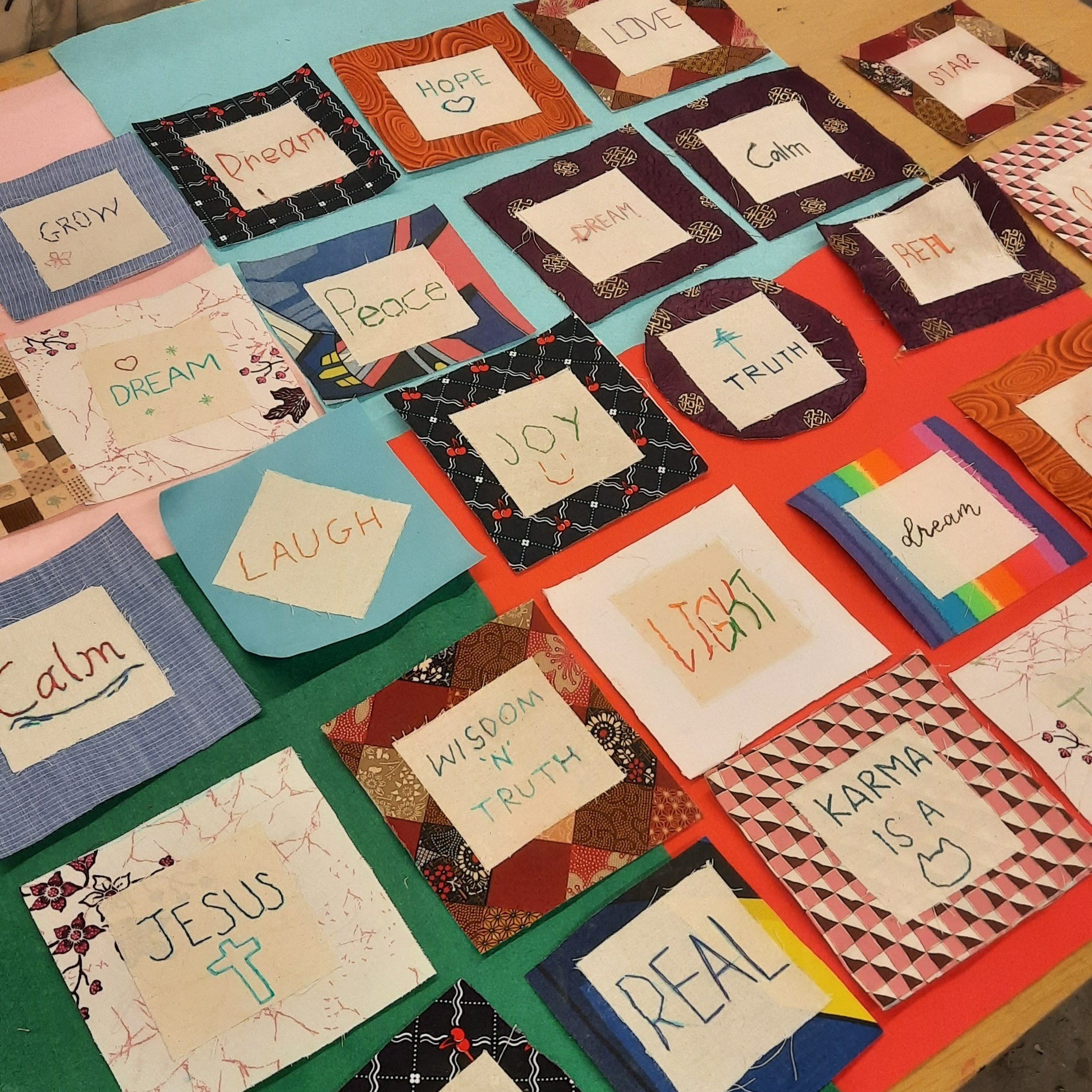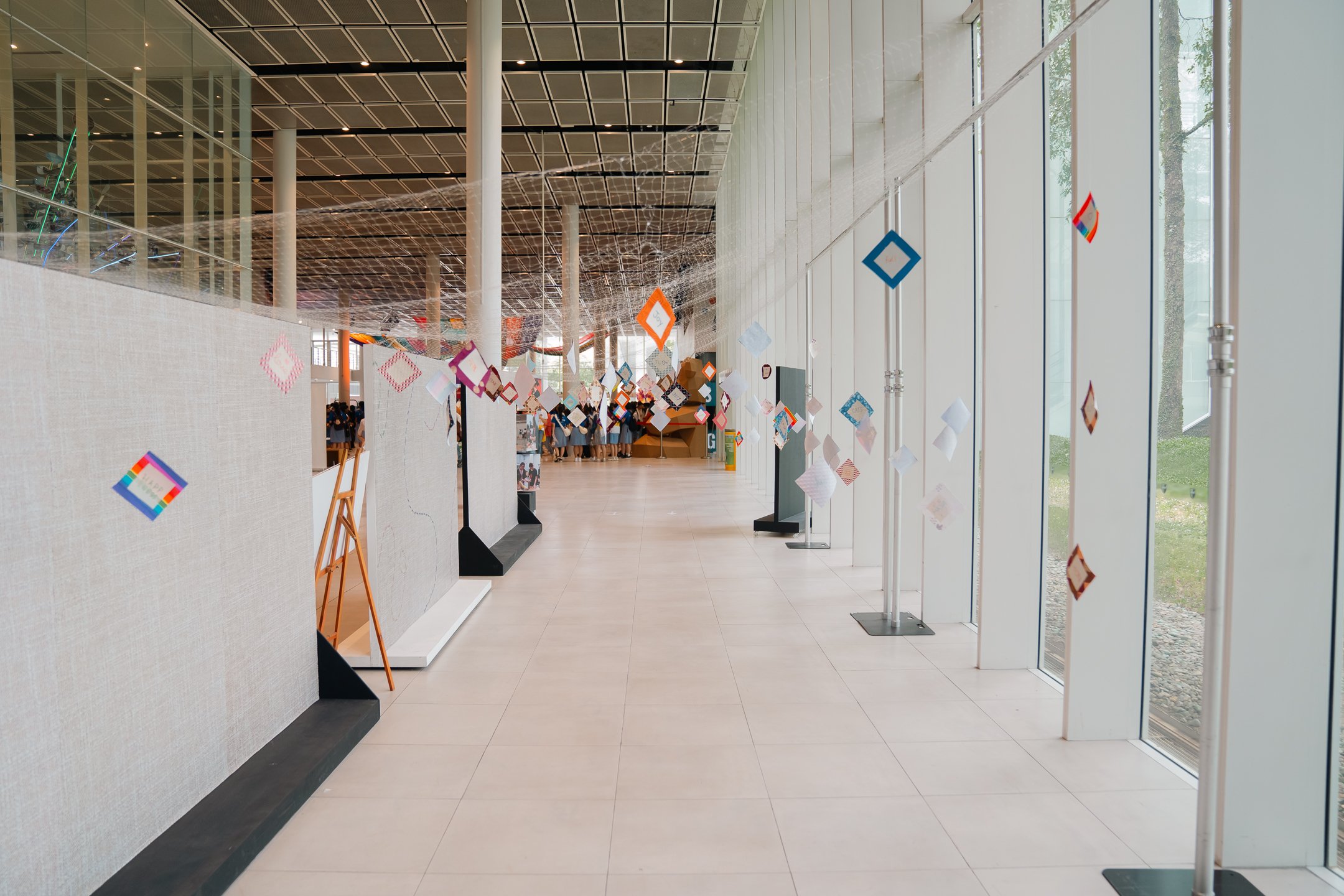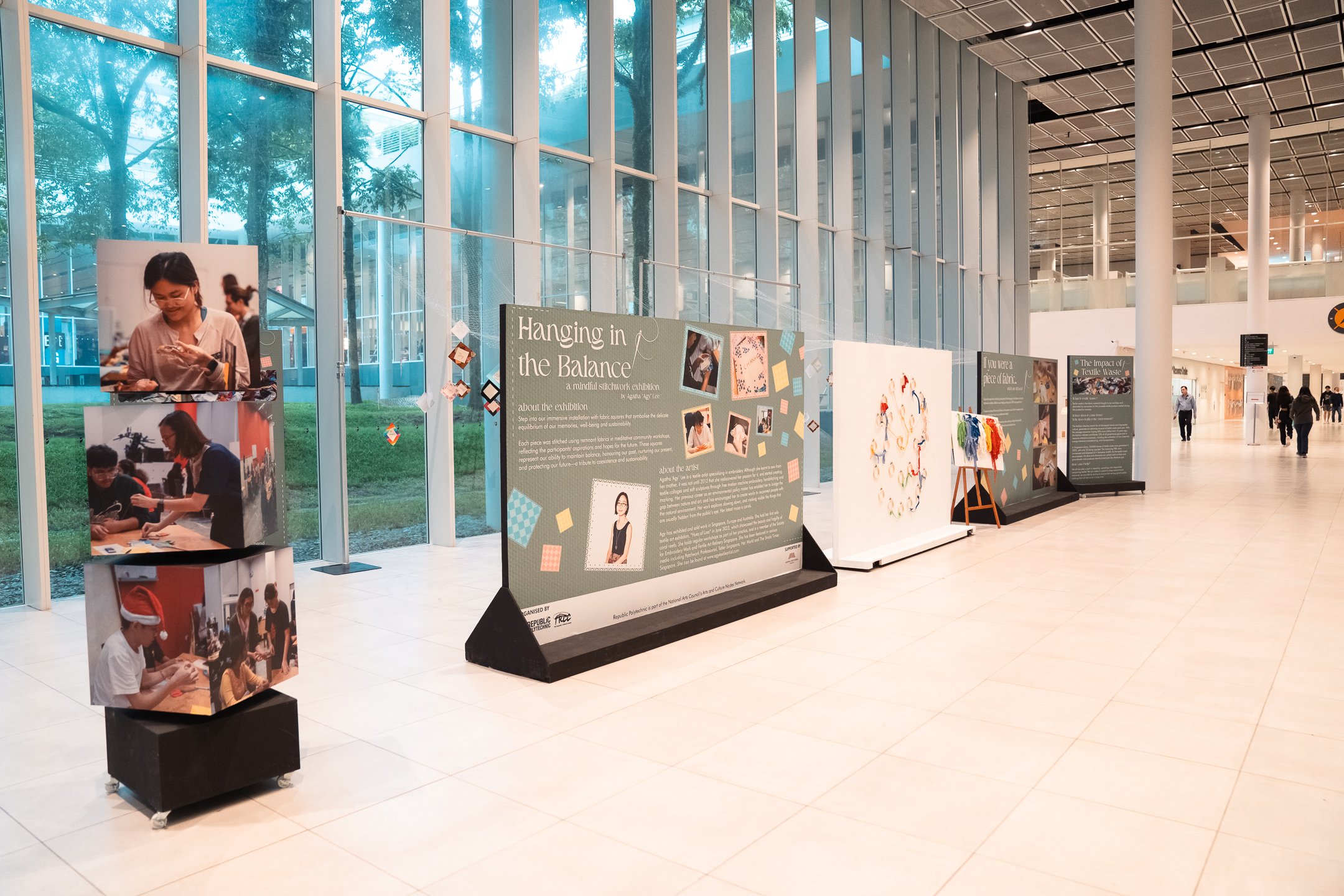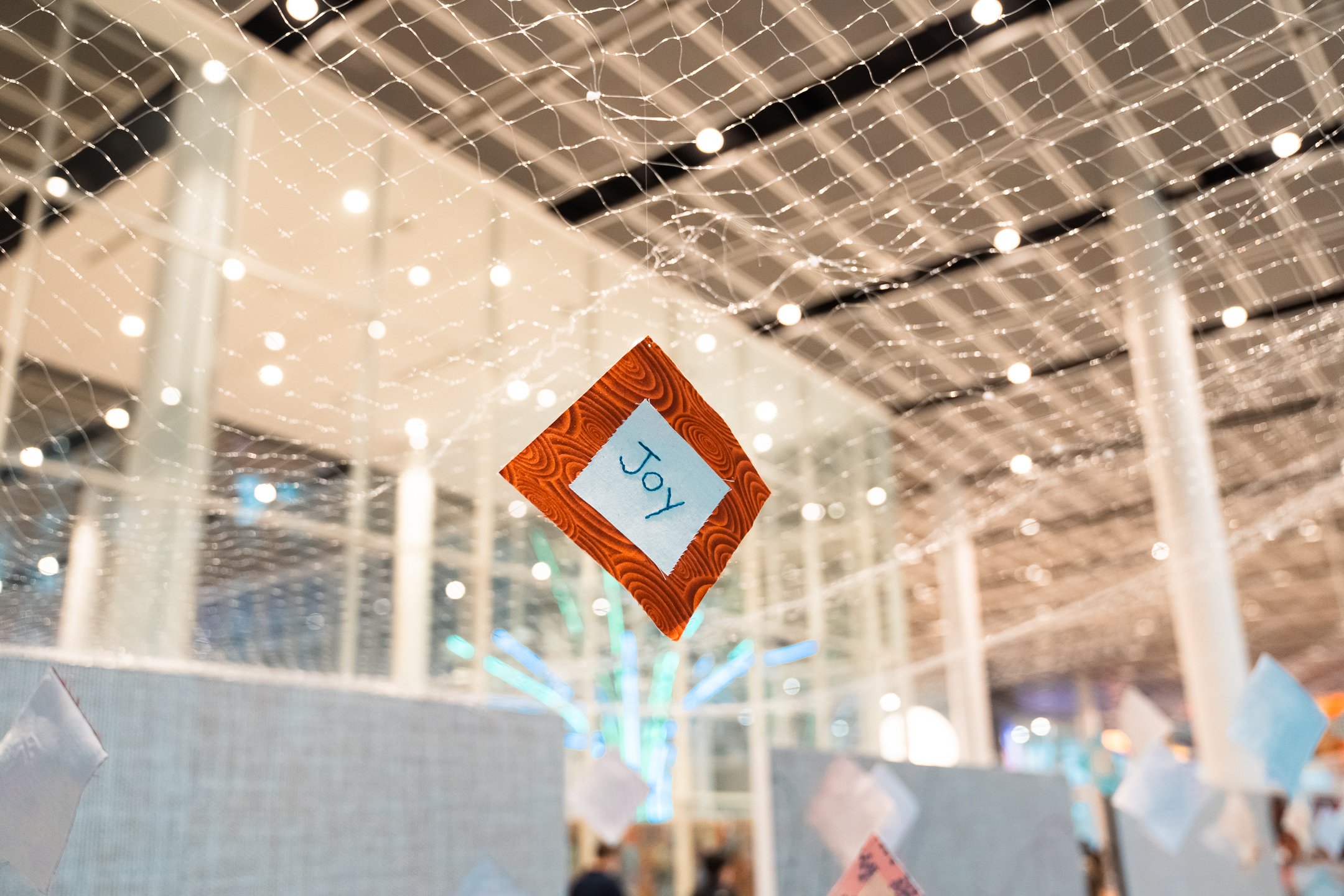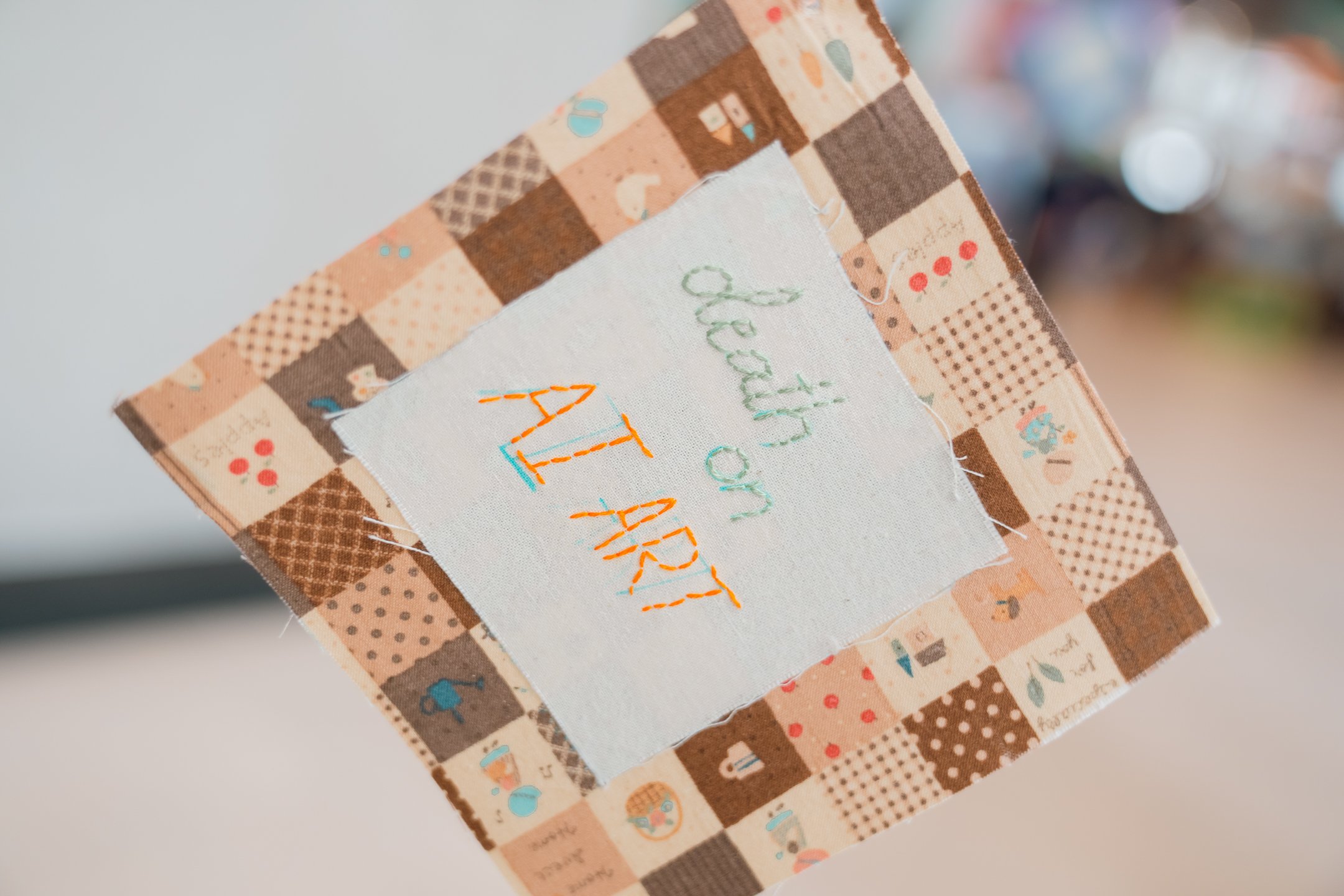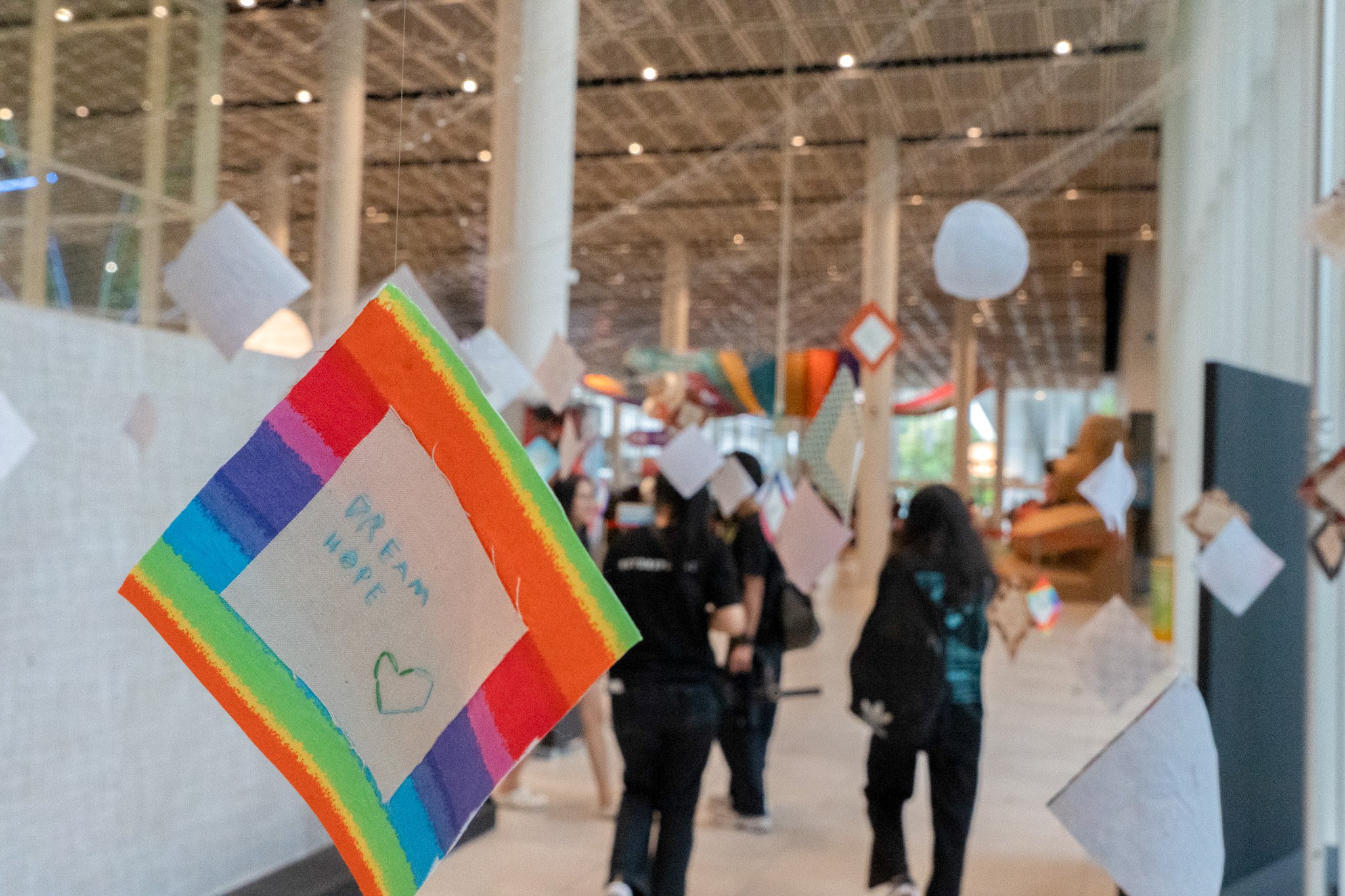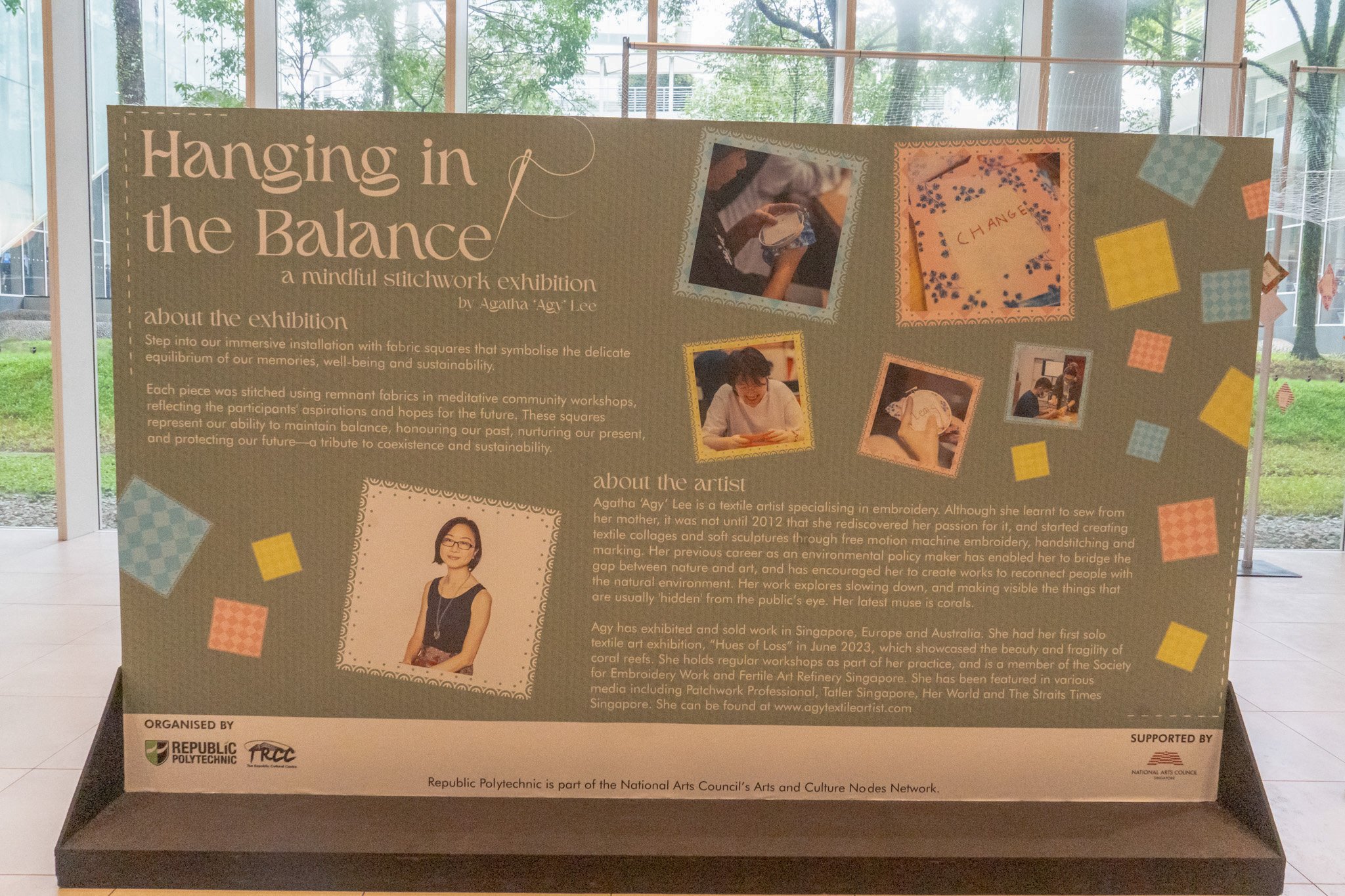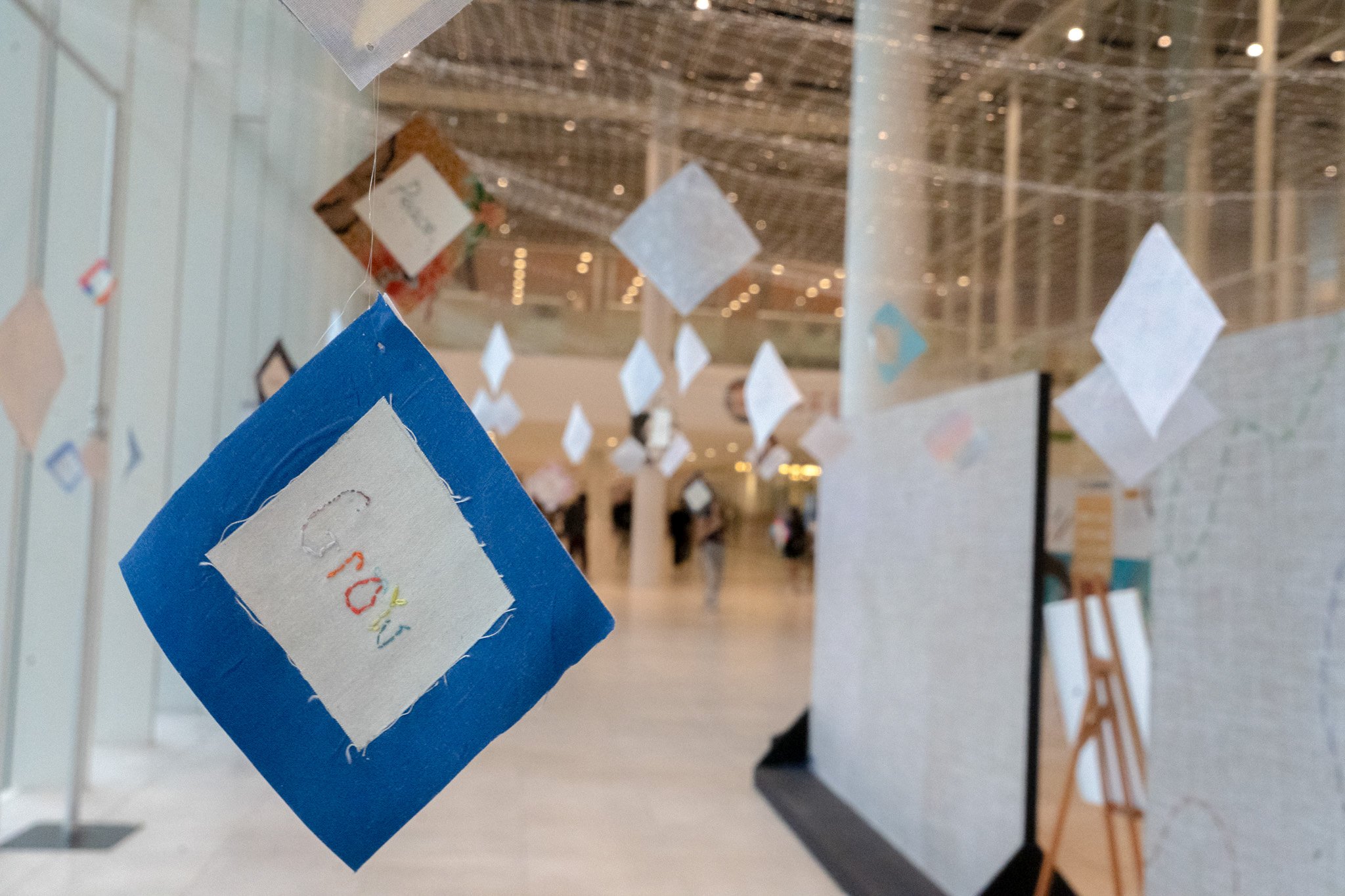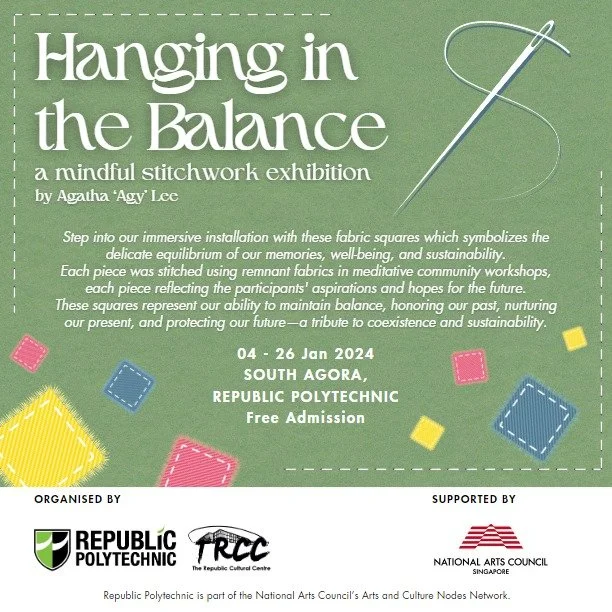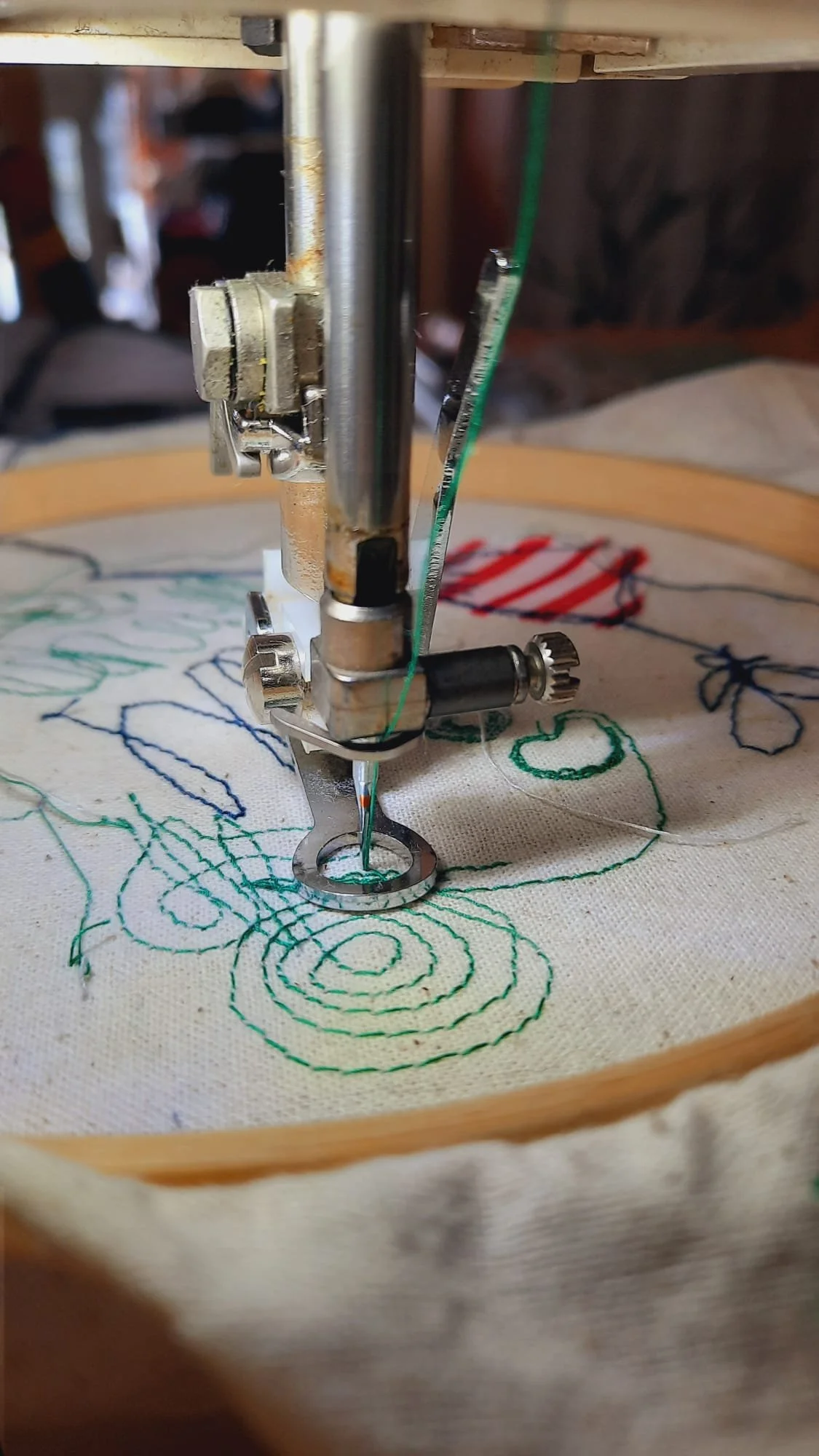A Collaborative Textile Art Exhibition with Stitch Meditation
I enjoy stitching by hand a lot.
There is a very calming and meditative effect that it produces. Every time the needle goes through the fabric, and you slowly pull it through with the thread, all my worries seem to melt away. This process was coined “stitch meditation” by Liz Kettle. Others call it zen stitching, or stitch yoga. Whatever the term, the process of creating stitches without rules is a very therapeutic one. This activity has helped me slow down, and is part of my artistic journey in helping me observe what is around me.
Stitch Meditation Involving the Community
In the last half of this year, I was approached by, Art.itude, the art club of Republic Polytechnic, to come up with a textile exhibition that would involve their students, and the community. The exhibition had to also attract students during the Open House in Jan 2024, an event where thousands converge on the campus to see what the institution has to offer for further studies. There were a few challenges - it had to be simple enough for the students (who are mostly beginners when it comes to basic sewing) to create. Secondly, it had to have a sustainability theme, and finally, there were only 3 workshop sessions for us to create a large installation!
I think this is when both sides of my brain kicked into gear!
Sustainability - when this word pops up, most people think of the environment. Did you know that there also 2 other pillars of sustainability, as defined by the United Nations Sustainable Development Goals (UNSDGs)? They are people and economy. Under the people pillar, mental health has been included in one of the goals (UNSDGs). Students go through a lot of things during their formative years. I think we have all been there - stressful studies, exams, finding out who you are and where you fit in etc. I felt it was important to bring out the wellness aspect (other than environmental) of sustainability in this project
Keeping it simple - given the skills of the participants, it was important to focus on only one type of hand stitch that would not only create something visually pleasing, but is easy for the participants to learn.
Attractiveness of the exhibition - I decided that the installation had to be immersive to attract participants to view the works by the community.
I settled on the idea of engaging the community in a creative and reflective experience that connects the past, present, and future. This would involve the use of stitch meditation.
Nourishing the Present with Stitch Meditation - Participants in the community workshops would sew small squares of fabric together not only as a creative act, but also as a contemplative activity to embrace well-being (akin to repair) and slowing down in an increasingly fast-paced world.
The act of slowing down helps us to observe and appreciate the beauty of our living environment.
Safeguarding Our Future - In the reflective stitch meditation session, participants would sew words that express their desires and hopes for the future.
Appreciating the past - Each hanging fabric square is a figurative memory fashioned from old garments from the workshop participants - a tactile representation of the past.
Immersive Installation - The finished pieces of fabric squares would “float” above the viewers, reminding us that our memories and well-being, like sustainability, are in a fragile balance. Our minds develop when we learn to 'hang in the balance,' appreciating our past, nourishing our present, and safeguarding our future - a testament to coexistence and sustainability. Members of the public will immerse themselves through the past, present and future while walking through the installation, and observe how fragile our well-being is. Viewers can also respond to the exhibition with an interactive section in the installation.
What I Learnt
One of the things (and an important one too) that I learnt is that I had to keep reminding myself that it is a collaborative project. Throw away the ego!
Here are a few other learning points:
See the site of the installation in the first instance - you don’t want any surprises
Ask all your questions at the beginning of the project. You don’t want to spring any surprises on your collaborator so think through the process carefully.
Keep communication channels open
Iron things out during meetings - face to face is the best, and summarising key points afterwards with follow-up actions helps to avoid confusion.
Take note of your target audience in the workshops - use whatever is available to make the workshop easy to understand so that participants can follow through. However, there are times when things may not go according to plan, so be aware of what is happening and make the necessary adjustments.
Come Visit
A big thank you to Art.itude advisors, Skyler and Deborah for their help and patience.
A special thank you to the students of Art.itude who assisted me throughout the project in particular, Pooja, Oliva, Amanda, Green, Warren, Lydia, Qian Yi, and Cheryl.
Special mention to my fellow artist, David Liew, who made it happen.
Photographs: PhotorepublicIG

